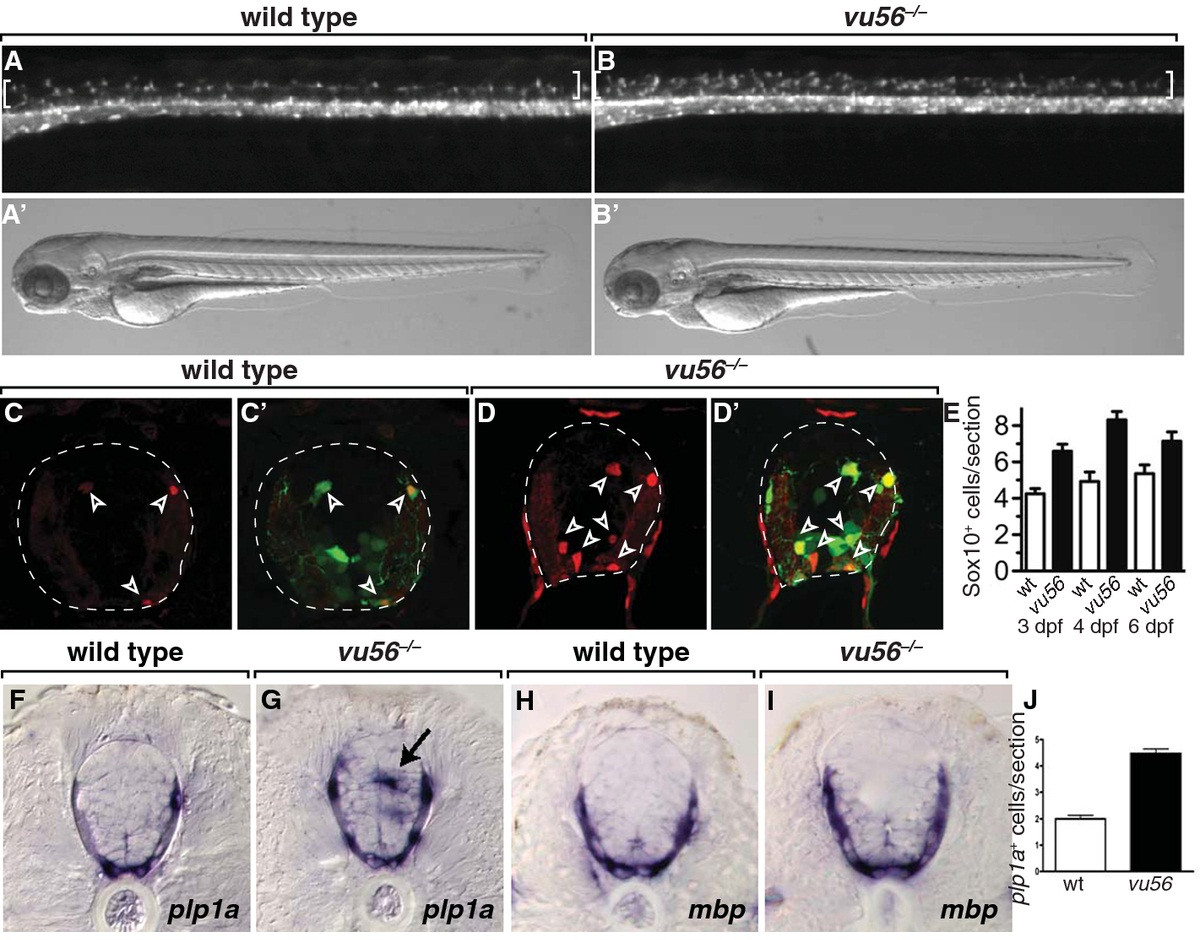Fig. 1
Fig. 1 The vu56 mutation causes formation of excess OPCs. (A,B) Lateral images of 3 dpf sibling and vu56 mutants carrying the Tg(olig2:EGFP) reporter marking OPCs in dorsal spinal cord (brackets). Insets show bright field images of living larvae. (C-D′) Transverse sections of sibling and vu56 mutant spinal cords processed for immunohistochemistry to detect Sox10 expression (red, arrowheads). Panels C′ and D′ show Sox10 labeling merged with olig2:EGFP (green). Dashed lines indicate outer edge of spinal cord. (E) Quantification of Sox10+ cells per spinal cord section in wild-type (wt) and vu56 mutant larvae at 3, 4, and 6 dpf (n = 17 wild-type, 19 mutant at 3 dpf (p<0.0001), 7 wild-type and 10 mutant at 4 dpf (p = 0.0002), 5 wild-type and 5 mutant at 6 dpf (p = 0.0357)). (F-I) Transverse sections of 4 dpf wild-type sibling and vu56 mutant larvae, at the level of trunk spinal cord, processed for in situ RNA hybridization to detect plp1a (F,G) and mbp (H, I) expression. Arrow indicates ectopic plp1a expression. (J) Quantification of plp1a+ oligodendrocytes per section in wild-type and vu56 mutant larvae at 4 dpf (n = 4 larvae per genotype; p<0.0001). Error bars represent SEM.

